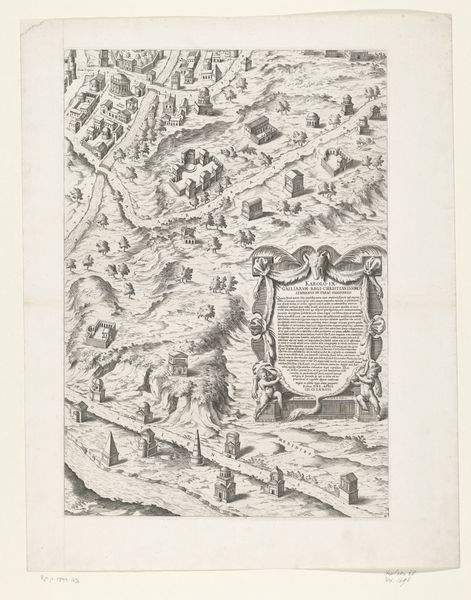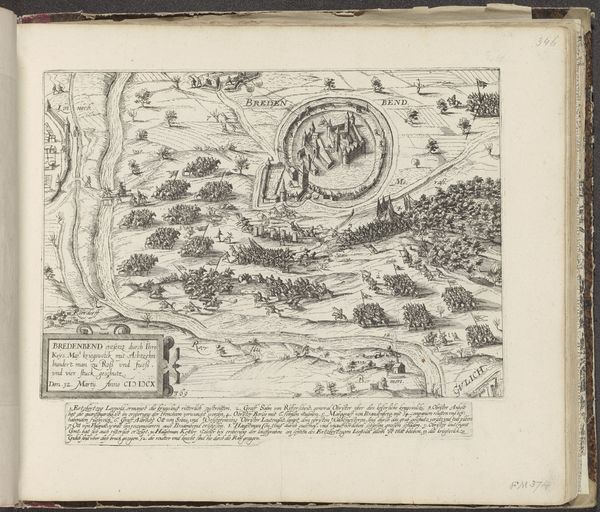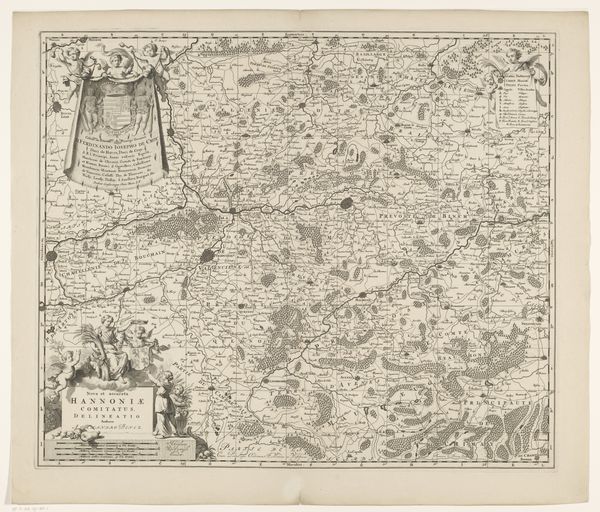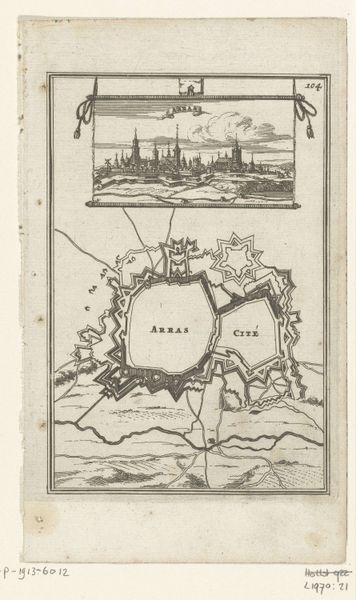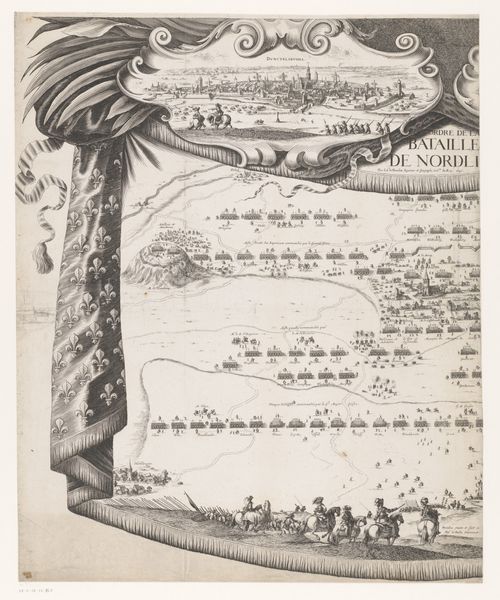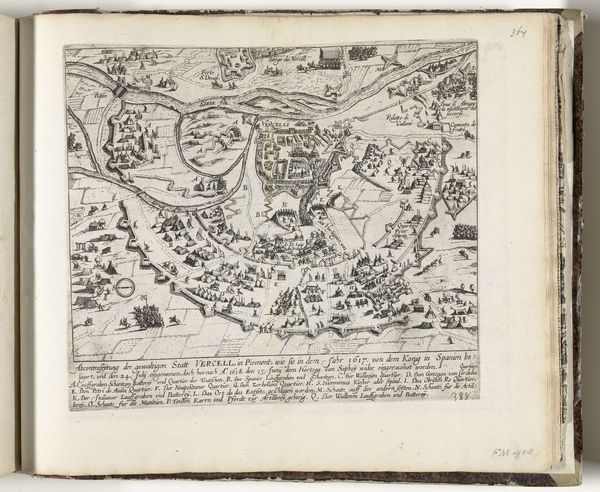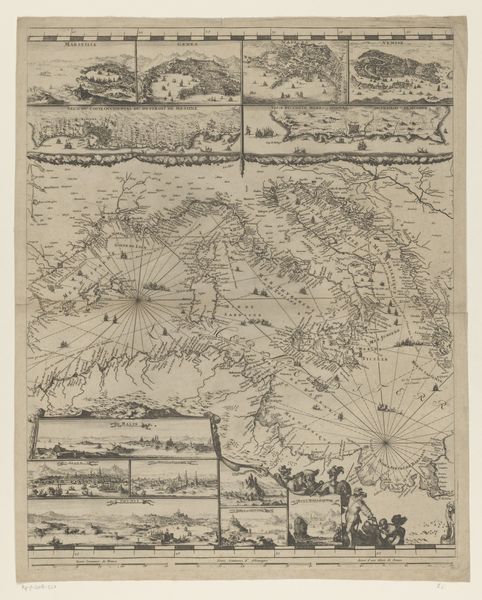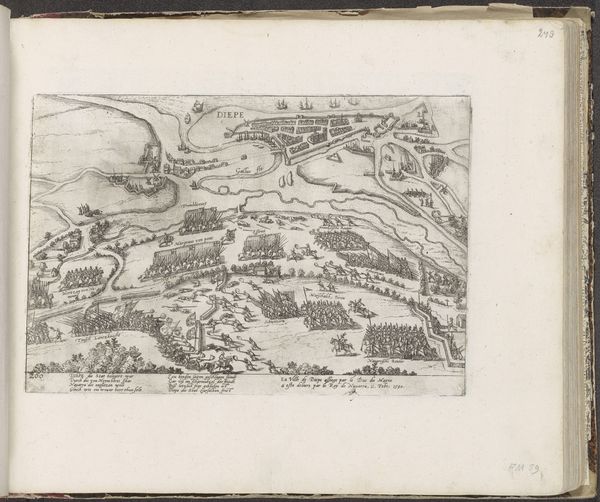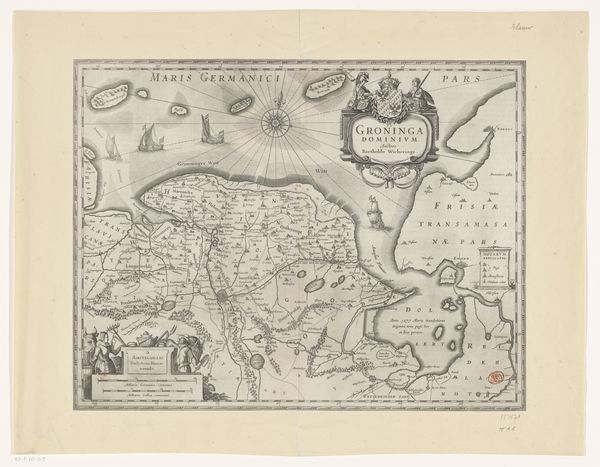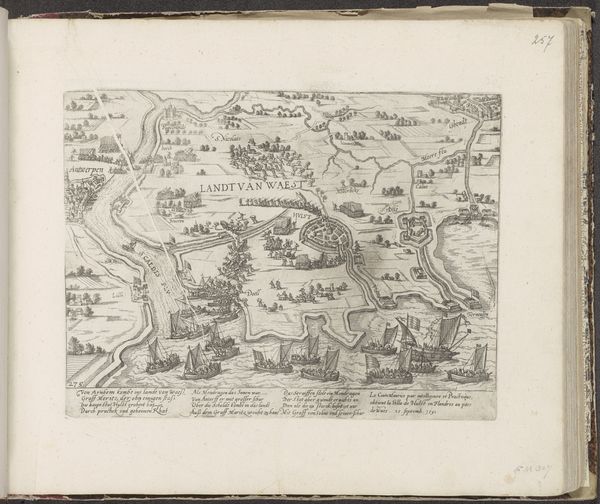
drawing, print, ink, engraving
#
drawing
#
ink paper printed
# print
#
pen sketch
#
old engraving style
#
ink
#
ancient-mediterranean
#
pen-ink sketch
#
pen work
#
cityscape
#
history-painting
#
engraving
Dimensions: height 521 mm, width 360 mm
Copyright: Rijks Museum: Open Domain
Curator: We’re standing before “Plattegrond van Rome in de Romeinse tijd (eerste deel),” a fascinating print dating from 1639 to 1691, crafted by Étienne Dupérac. It's held here at the Rijksmuseum. Editor: Wow, my first thought is, it's a really ambitious undertaking. So much detail! It feels both meticulously planned and…a little dreamy, almost like a half-remembered city. Curator: Absolutely. Dupérac uses ink and engraving techniques on paper to bring the ancient city to life. Considering its age, we should consider the intersection of power, memory, and representation. How do dominant narratives about ancient Rome influence even its cartographic representations? The placement of the "S.P.Q.R." emblem, for example, isn't simply decorative. It evokes centuries of Roman political and cultural influence. Editor: The ‘dreamy’ feeling is maybe the absence of daily life, of its mess and vibrancy. It is an idealization—grand buildings and topography rendered with this intricate precision. Curator: Right, the 'mess' you describe is key. Consider that for centuries, European culture has looked back to ancient Rome. The engraving is far from objective, and participates in a visual dialogue steeped in colonialism, power, and ideas of progress. Editor: Well, looking at it, there's something poignant about trying to capture something so vast, so sprawling. The attempt is where the heart of it is. All those tiny marks painstakingly made – you feel the artist's presence somehow. Makes you want to get lost there. Curator: Precisely, to see this map only for what it depicts—the literal layout of Rome—is insufficient. The map speaks to power dynamics across centuries, it also is a palimpsest of cultural aspirations and impositions that affect all social dynamics. Editor: Looking at it now, I am imagining the engraver, maybe hunched over a table by candlelight. It gives me a shiver, feeling so linked across time through that dedication. Curator: Agreed. Dupérac's piece invites us to analyze historical narratives but also to recognize art's subjective and emotional power. It pushes us to question the relationship between historical representation, collective memory, and the potential for creating inclusive futures. Editor: It has got me pondering how we construct places, then and now. So, I might go grab my sketchbook… see what kind of half-remembered world I can capture today. Thanks!
Comments
No comments
Be the first to comment and join the conversation on the ultimate creative platform.
